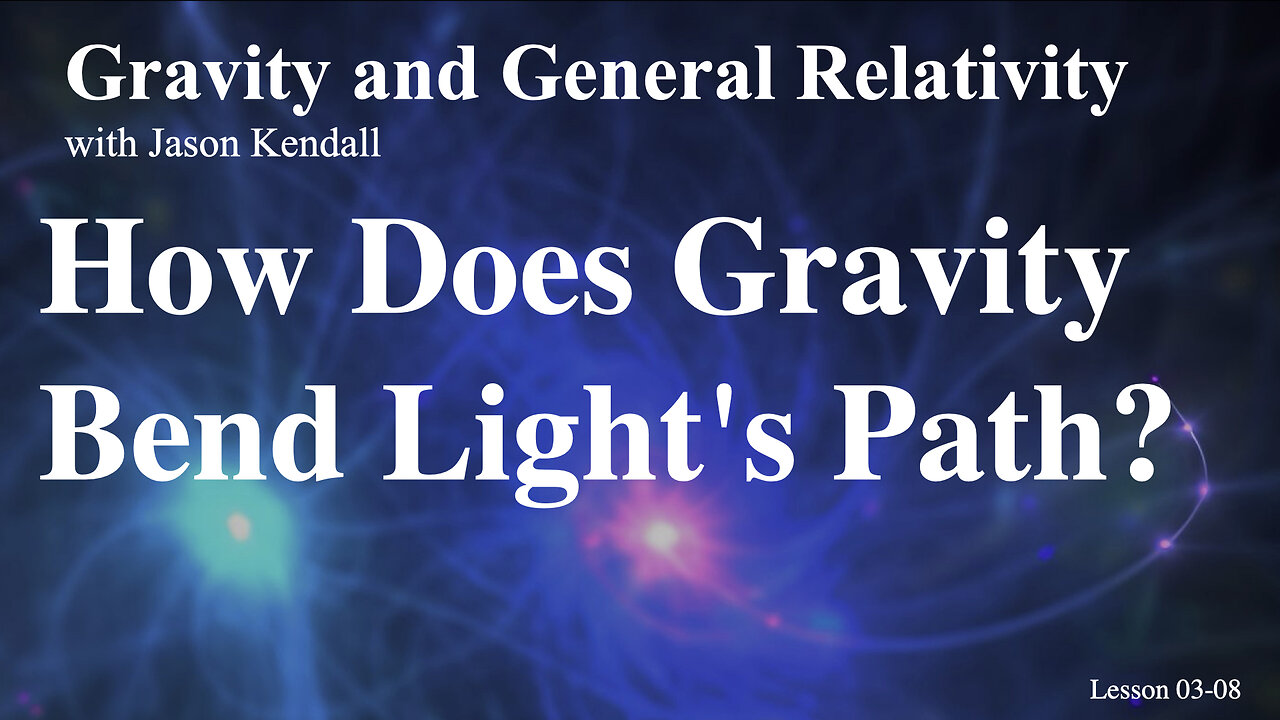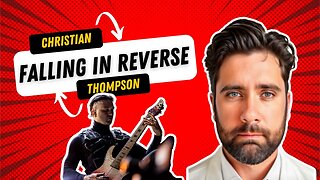Premium Only Content

Gravity Explained: The Curvature of Spacetime and Its Secrets!
In this lecture, we will further explore the concept of gravity and its relationship with spacetime curvature. Previously, we discussed the nature of gravity and the principle of equivalence, which posits that inertial mass is equal to gravitational mass. This equality serves as the foundation for Einstein’s theory of general relativity, which asserts that gravity results from the curvature of spacetime caused by the presence of matter and energy. To understand this relationship, it is essential to recognize that spacetime curvature creates a feedback loop: spacetime informs matter how to move, while matter informs spacetime how to curve. This aphorism, attributed to John Wheeler, encapsulates the dynamic interplay between matter and spacetime. To grasp the implications of curved spacetime, we must return to the fundamental concept of measurement. Measurement is crucial in science, allowing us to quantify and understand physical phenomena. Let us consider four distinct scenarios to illustrate how gravity operates within different contexts. The first scenario involves a room located deep in space, far removed from any celestial body. In this environment, one would experience weightlessness, as there is no gravitational force acting upon them. Consequently, an individual would be floating, with no definitive up or down orientation. Importantly, all laws of physics remain consistent in this scenario, as they would in any other. The second scenario involves a person freely falling within a gravitational field. An illustrative example of this experience occurred when I was in an elevator in the World Trade Center. The elevator suddenly plummeted several floors before the brakes engaged. During that brief moment of freefall, I felt weightless, highlighting the sensation associated with falling. The third scenario features a person standing on the surface of the Earth, experiencing the effects of gravity as they normally would. The fourth scenario presents an imaginative situation where a room is equipped with rockets that accelerate the room upwards at 9.8 m/s², mirroring the acceleration experienced due to gravity. Einstein’s theory of relativity asserts that all freely falling frames of reference are equivalent. This means that individuals within freely falling frames do not experience their own weight. Consequently, the first two scenarios, both featuring freely falling individuals, demonstrate that the laws of physics remain unchanged across different reference frames, regardless of their respective orientations. Let us examine the first pair of scenarios in more detail. Imagine an individual floating in deep space, equipped with a laser to shoot across the room. As the laser beam travels straight to a target, it activates a sound upon impact, indicating a successful hit. Now consider the second scenario, where a person is freely falling within a gravitational field. This individual also utilizes a laser to shoot across the room. From their perspective, the laser beam travels straight to the target, resulting in a successful hit as well. However, an observer named Tony, positioned outside and witnessing the situation, perceives the individual falling in a gravitational field and sees the laser beam following a curved trajectory. This curvature results from the fact that the target is also falling downward as the laser travels across the room. In this context, the observer Tony interprets the situation differently, recognizing that while the laser travels straight according to the individual inside the room, it appears to curve from his perspective. This exemplifies the principle of relativity, where different observers may perceive the same event in distinct ways based on their positions and reference frames. Now, let us consider the fourth scenario, where the room is accelerating upwards at 9.8 m/s². In this case, the individual inside the accelerating room shoots the laser across the room. From the perspective of the person in the room, the laser appears to travel straight across, but Tony, observing from the outside, recognizes that the target moves upward as the laser travels. Thus, the laser beam appears to hit lower towards the floorboards as the target rises, creating a similar effect to the previous scenarios. Einstein’s principle of equivalence posits that there is no distinction between acceleration due to gravity and acceleration due to motion. This means that the experience of acceleration feels the same, regardless of the source of that acceleration. Consequently, whether one experiences gravitational acceleration or acceleration within a moving frame, the effects are indistinguishable. In conclusion, the analysis of these scenarios reveals that freely falling reference frames are equivalent and that the laws of physics remain consistent across different contexts. The interplay between gravity and spacetime curvature underscores the fundamental principles of general relativity, leading us to a deeper understanding of the nature of gravity. As we continue to investigate these concepts, we will explore further implications and applications of general relativity in subsequent lectures.
-
 LIVE
LIVE
FreshandFit
2 hours agoHunger Games: Fresh&Fit Edition
14,926 watching -
 2:06:29
2:06:29
TimcastIRL
8 hours agoAirlines Cancel Over 700 Flights, Travel APOCALYPSE Is Now, Trump Says END FILIBUSTER | Timcast IRL
211K87 -
 LIVE
LIVE
SpartakusLIVE
13 hours agoTOXIC Solos on ARC Raiders || Friday Night HYPE - WZ or Redsec Later?
1,076 watching -
 2:15:42
2:15:42
TheSaltyCracker
5 hours agoWoke is DEAD ReeEEStream 11-07-25
100K176 -
 1:29:13
1:29:13
Sarah Westall
4 hours agoThe City of London: Infiltration, Intimidation & Centralized Power w/ Mike Harris
29.1K11 -
 10:14:18
10:14:18
Dr Disrespect
15 hours ago🔴LIVE - DR DISRESPECT - ARC RAIDERS - AGAINST ALL DANGER
185K25 -
 32:09
32:09
ThisIsDeLaCruz
1 day ago $1.09 earnedFalling In Reverse: Christian Thompson’s Stage Tech Revealed
25.4K4 -
 LIVE
LIVE
SynthTrax & DJ Cheezus Livestreams
1 day agoFriday Night Synthwave 80s 90s Electronica and more DJ MIX Livestream 80s Night / Late Night Nostalgia
399 watching -
 4:05:52
4:05:52
Nerdrotic
10 hours ago $13.10 earnedHollywood REGRET | Disney's Predator | The Feminist Avengers - Friday Night Tights 379
61.7K17 -
 2:36:22
2:36:22
Mally_Mouse
4 days agoFriend Friday!! 🎉 - Let's Play! - MIMESIS
29.6K3